The Knowledge That Won't Fit Inside Your Head Part 1 - Commonplace Books
In which we discuss the commonplace book, a time-tested means of saving information and learning it
“Anticipatory plagiarism occurs when someone steals your original idea and publishes it a hundred years before you were born.” - Robert K. Merton
In a world drowning with information it’s easy for some of the best bits to be lost. In this new series of posts I’m going to tell you a bit about some analog (non-digital) solutions that I’ve used to keep track of information. Some of these methods have been around for centuries, as is the case for today’s installment.
I like to read books, articles, newsletters and posts and I like to save copies of what I read for future reference. Around 10 years ago I used Del.icio.us (RIP)1 and other bookmarking applications to save links for future reference to writing about social, psychology, marketing, entrepreneurship, etc. On top of that I used to keep file folders of blog posts and articles. At some point I started cutting and paste sections of posts and articles into journals (generally A5 sized), like maintaining a scrapbook of the most interesting and useful bits.2
Later I realized that I was creating commonplace books, an information storage tool that’s been used for centuries. Let’s see what these are all about, checking with some online sources.
Wikipedia’s definition is spot on:
Commonplace books (or commonplaces) are a way to compile knowledge, usually by writing information into books.
What kind of knowledge, you ask? The sky’s the limit but from a historical perspective, Wikipedia offers the following:
Such books are similar to scrapbooks3 filled with items of many kinds: sententiae (often with the compiler's responses), notes, proverbs, adages, aphorisms, maxims, quotes, letters, poems, tables of weights and measures, prayers, legal formulas, and recipes. Entries are most often organized under subject headings[1] and differ functionally from journals or diaries, which are chronological and introspective."[2]
If you want to see an example of what a 20th century master of weird4 kept in his, here’s a reproduced entry from H. P. Lovecraft’s commonplace book.
People are are still following the spirit of commonplace books, see the example below from Notebook of Ghosts:
In the centuries before computers, commonplace books were a scholarly way to amass and retain information. Everything was handwritten because there was no alternative for most people to record information. You could write your findings in a chronological order like a diary or, in some cases, you might set up a simple alphabetical indexing system or keep a table of contents.
As for what you could (or can) record in a commonplace book, there’s really no limit. And there’s no need to handwrite everything, it’s perfectly acceptable to cut and paste material to save time and effort.
Here’s how I am maintaining my commonplace books, trying to standardize on the Leuchtturm1917 A5 hardcover journal:
The Leuchtturm1917 journals very helpfully give you a multiple page table of contents (or index) at the beginning of their journals. Here’s a couple of examples from my Commonplace Book 2 (or CPB25 as I call it):
The entry above is one of the fancier entries that I’ve created, where I’ve added some marginalia and put the original source below.
Below is a two page spread summarizing a Fast Company.com article about the Pennebaker method, as covered in Timothy Wilson’s book Redirect:
From CPB3, here’s an entry about decision making from the Farnam Street website, where I cut and pasted information about making and maintaining a decision journal - click on the image below to see the original post.
One good thing about a commonplace book is that even if you’re cutting and pasting material into the book you can add your own notes, tags and marginalia, like the example below (it’s a bit messy because of taping, re-taping, and an ink smudge:
Here’s my summary of the pros and cons of making and using commonplace books:
Pros
You work with your hands
Sometimes I snidely refer to commonplace books as scrapbooking for men, which is complete malarkey because anyone can make and use either commonplace books or scrapbooks. But there’s something very satisfying about creating a page layout, cutting and pasting material and annotating everything in your own writing, like there is in building furniture, doing auto repair or maintaining your lawn or garden. In a way you may feel you are creating your own book - and you are!
Handwriting and printing helps to retain information
There are different schools of thought about this but there is research out there that suggests that physically recording information on paper helps to retain that info.
You can be creative and customize how it looks to your heart’s content
Be as artistic as you want! Make it look like a diary, a newspaper page, a comic book, a Wikipedia page - whatever you like! Use your commonplace book as a way to express your personality and what you love.
You learn new things
You will be exposed to lots of new, interesting ideas both by the research that you do and through the process of incorporating it into your commonplace book
You will develop many new ideas
The process of handling knowledge and thinking about it will naturally lead you to making connections between old and new information, which in turn sparks new ideas. This is one of the great things about being a human being: the ability to absorb, compare and create.
It will help keep your mind sharp and focused
Aging weakens both body and mind but exercising them both can slow down the decline, if not halt it for a time. We continually hear about the horrors of dementia and Alzheimer’s disease. If you think about it too much you’ll prematurely fall into a pit of despair. However, I would argue that adopting life long learning and working with new and interesting knowledge may be a good and fun way to combat cognitive decline.
Cons (and rebuttals)
Commonplace books are time-consuming to make and maintain
This is true. This is also true of any craft or hobby where you spend hours of time and effort to make things. Building dozens or hundreds of commonplace book pages can take hundreds of hours. However, many people can repurpose time spent doomscrolling, TV binging or playing video games to gradually build up a commonplace book. Think of it as a lifetime achievement, built slowly and an endeavor that can last for years.
Paper journals are difficult to index
If you use a stitched journal or stapled notebook you have to carefully index your pages, especially if you want to devote sections to the commonplace book to specific topics. If you run out of space in a section then it can be frustrating to have to start a new, unconnected section somewhere else and link them together. If you find that limiting, you could use a three-ring binder with looseleaf which gives you more flexibilty to move pages around. Or, you could use index cards if you can compress each entry to the size of an index card.
Commonplace books can become both messy and obsolete over time - knowledge evolves and has an ever shortening expiry date
Here’s one important way that scrapbooks and commonplace books differ. Scrapbook pages are meant to be static: once the page is made you normally don’t go back and revise it, similar to a photo album. Each page is a record of a moment in time.
Think of a commonplace book as a working, evolving tool that you update as you need to. Annotate pages as much as you like. Rip them out and replace them with new ones if it makes sense to do so. It’s your book, you make the rules.
But the environment…
It’s true, paper books have an environmental impact. Trees are harvested, pulped and pressed to make paper. Pencils, pens, inks, scissors, tape, etc.: they all have a carbon footprint. I can’t deny that. But your materials would be a small impact on the environment compared to so many other things out there. Let your conscience be your guide.
Commonplace books are bulky and not very portable
It depends. Commonplace books aren’t meant to be something you carry with you on airplanes, buses or trains but with some planning you could develop a portable system. You’ll never make a good one as small as your smartphone but that’s not the point. A commonplace book (or commonplace book library) can be whatever size you like.
But commonplace books are so last millennium, the digital age has made them obsolete and you can’t use hyperlinks, videos, audio files, etc.
My friend, you have to make choices about how you spend your time. A physical object cannot be as fluid or nimble or have as small of a footprint as a digital object. If you are a digital native, your point of view is quite valid! Many people want less paper in their lives, not more!
However, if you’re willing to accept some of the limitations, a commonplace book can be a wonderful thing. Don’t knock it until you’ve tried it!
The full series of The Knowledge That Won’t Fit Inside Your Head posts:
Part 2: Zettelkasten/Antinet or just Index Cards
Part 3: Journaling, With or Without Bullets
Other resources to learn more about commonplace books:
Toasted Cheese has just about the best all around guide to commonplace books
Accidental Creative - The Benefits of Keeping a Commonplace Book
Ryan Holiday (using index cards instead of an book to store the information)
I really, really should have made online copies of those bookmarks, it would be could to revisit them now.
Or exactly like maintaining a scrapbook, tbh.
See?
Lovecraft’s Twitter account, if he were alive to date, would be horrible, just like he apparently was.
I’m numbering my commonplace books backwards. My first two books became outdated and useless, plus I had more of my own draft scribblings in them that weren’t valuable to keep. Every now and then I do a “notebook harvest” where I go through a notebook, cut out parts that I want to keep and then paste them into a different notebook. I’ve filled Commonplace Book 3 (CPB3) and started into CPB2 a few years ago. If I fill that one then I’ll start CPB1 (Commonplace Book 1). I have a feeling that eventually I’ll “harvest” CP3 and keep the good bits elsewhere, then create a new CPB3.
Follow me for more productivity tips! ;) Though I doubt I’ll get a reputation for being efficient.




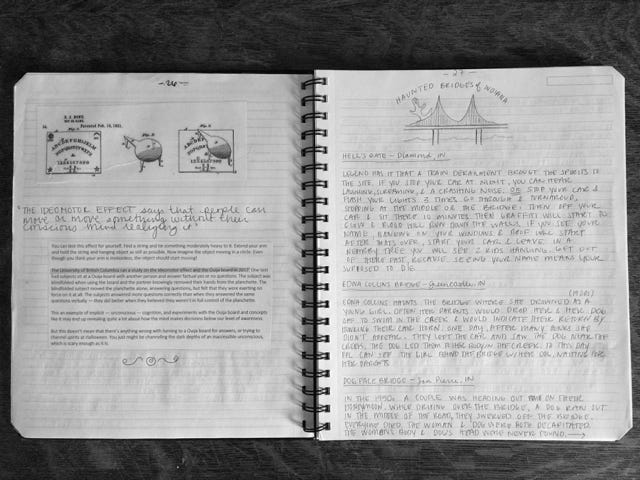
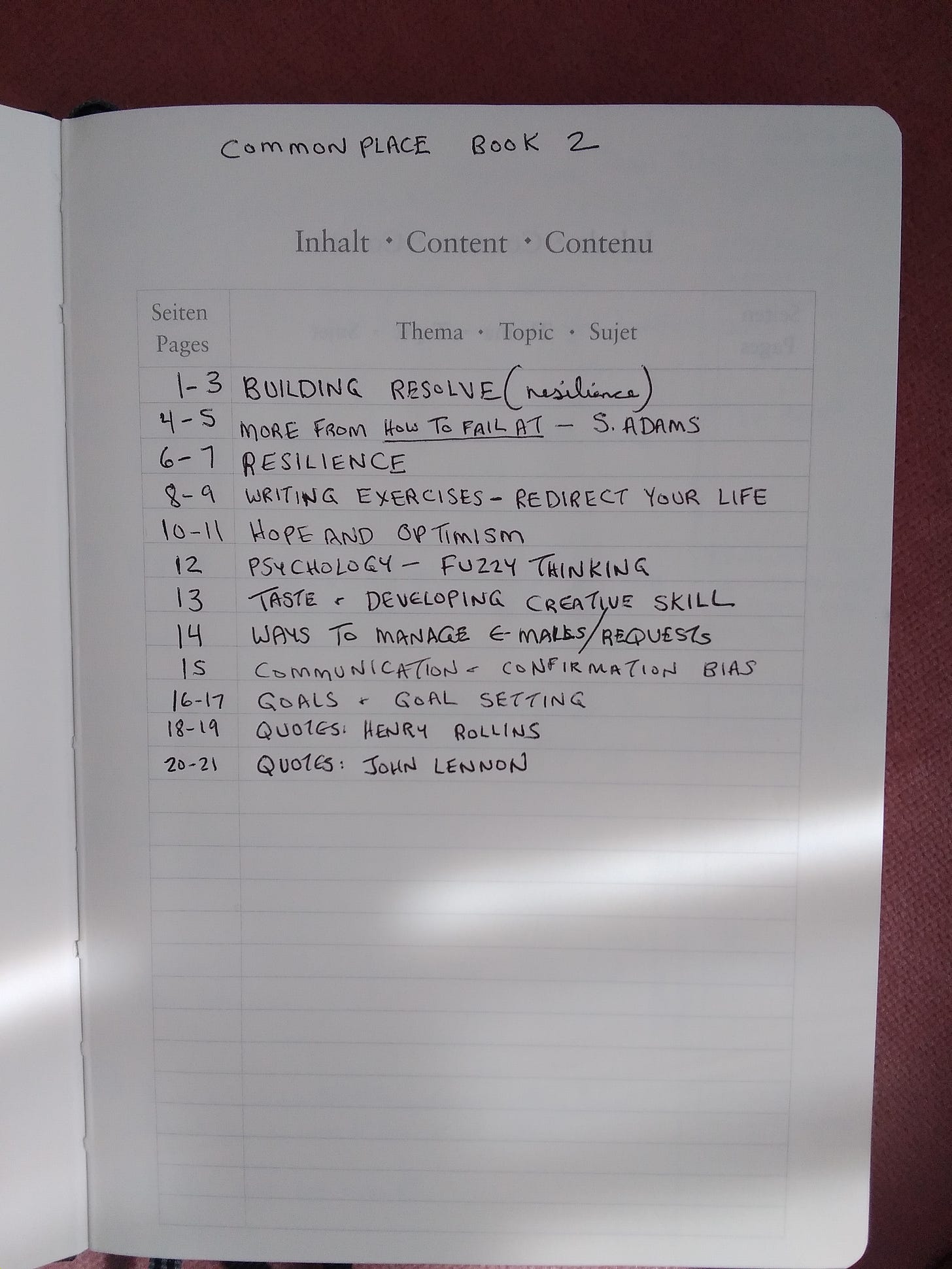
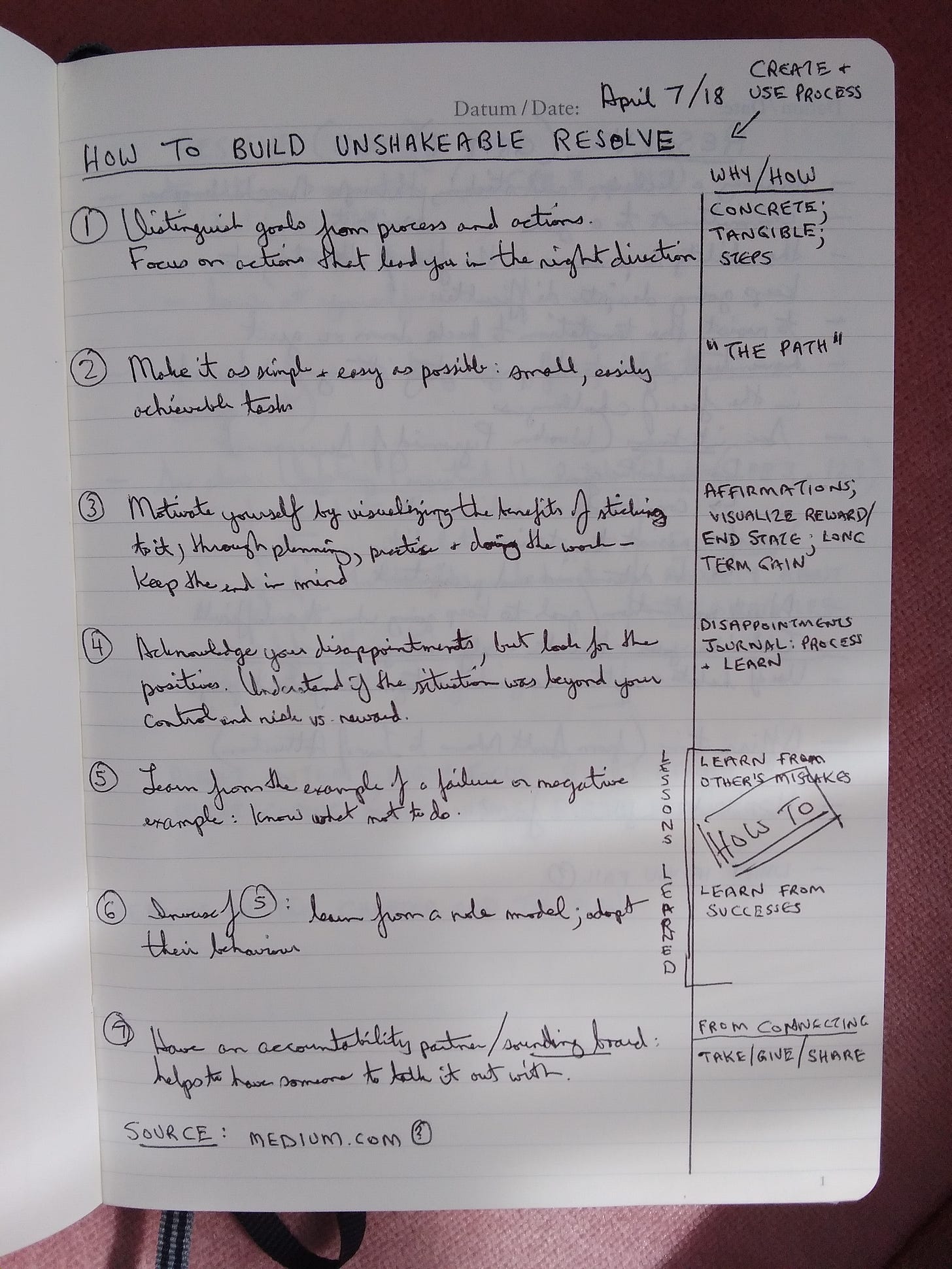
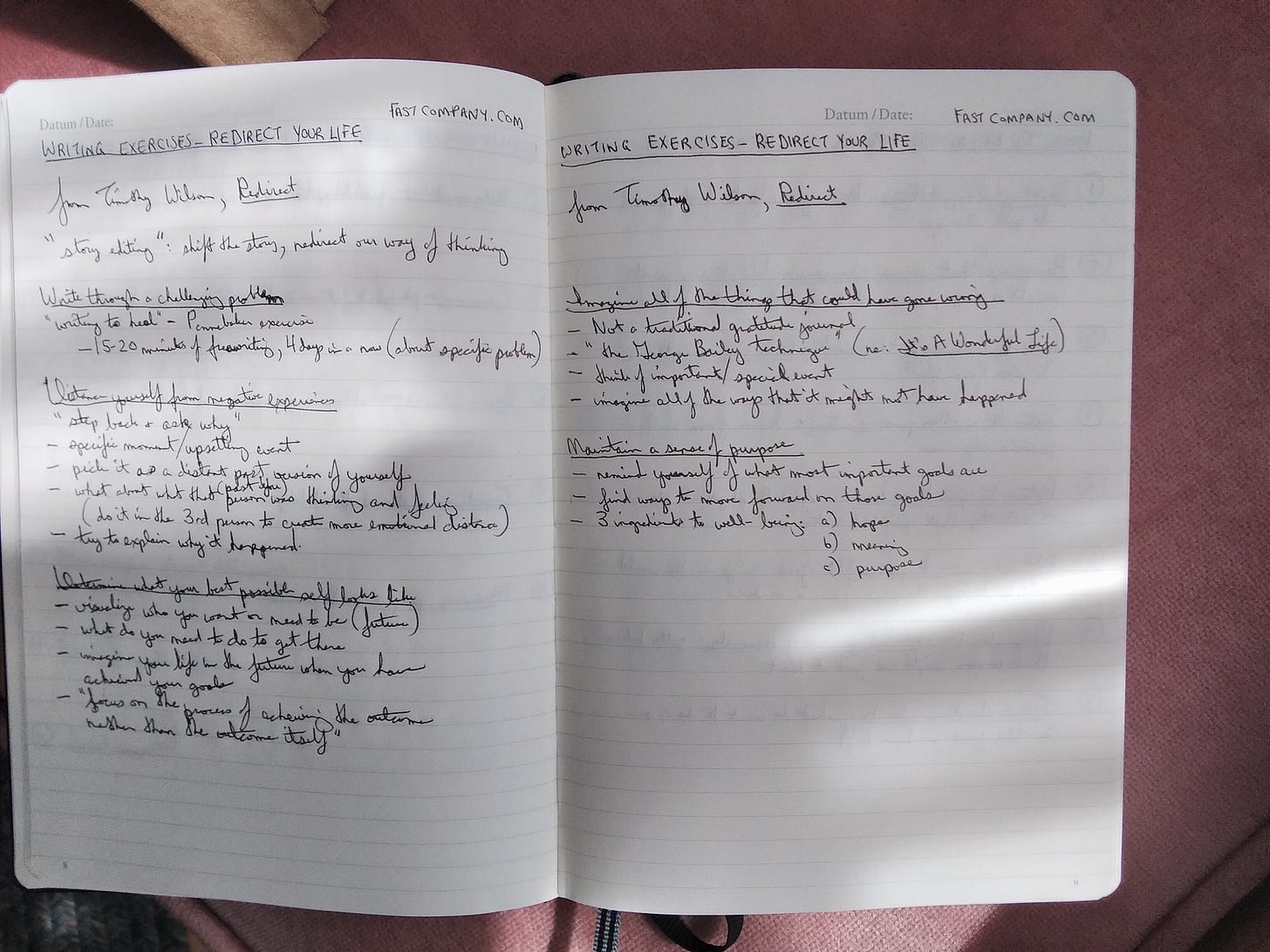

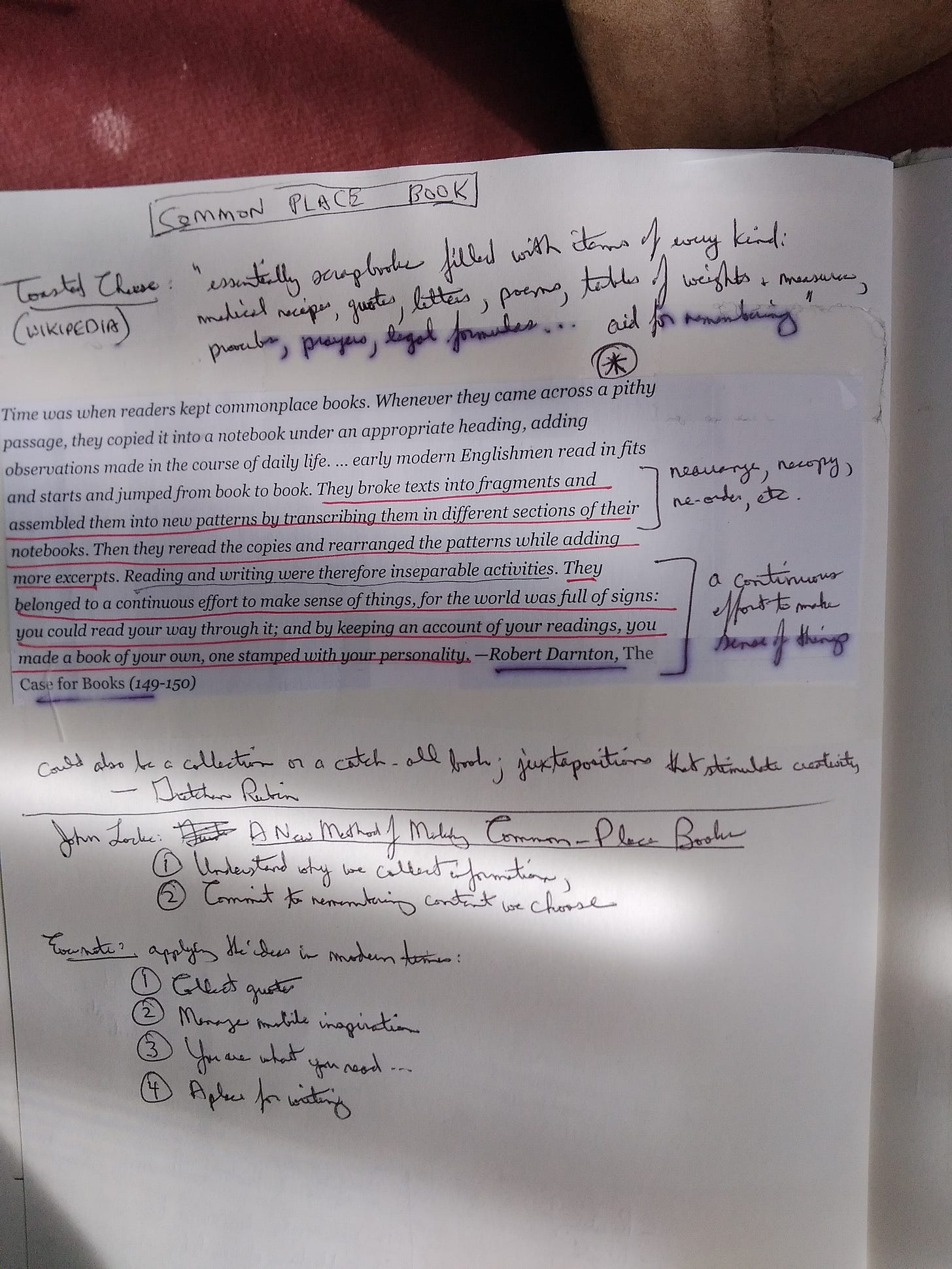
Though I've slacked off a bit, I carried a Moleskin in my back pocket for decades, and they're lined up waiting on my bookshelf for my biographer to peruse. The little Moleskins served as notetaking dump, brief diary, and the occasional noodling session in the library. Not exactly like your commonplace book, but a reserve and repository of sorts. There is a long-standing tradition -- classically grounded, I think -- of the "florilegium" in which snippets of literature were committed to paper. Part of a tradition that fed learning rhetoric and writing, something like a stylistic playground between book covers. Handwriting, however messy, helps inscribe words in the mind, where they can bounce around and shape other thought.
I liked this post, Mark. Looking forward to others on the topic.
I used to be a big commonplace keeper (hence my substacks name, although that is mainly a play on the fact that I mostly write about quotidian, everyday subject matter).
It was an immensely useful part of my writing practice and the building up of my worldview (as well as being a memory aid) but I found I became a but too much of ab information hoarder. Kept up the practice for three or so years, have a couple of ring binders full of notes which mean, among other things, that I will never have to read a self improvement book again.
But I’m now done with generalised information accumulation now. It’s about output, journaling and actually putting the ideas to use. Perhaps in future years there will be a further accumulation phase. Who can say?
Great piece though, Mark. Extremely good.